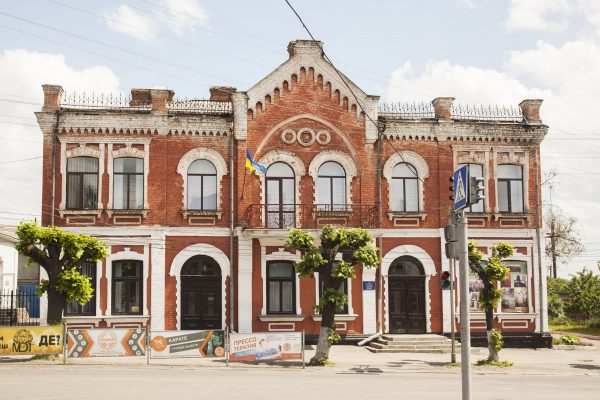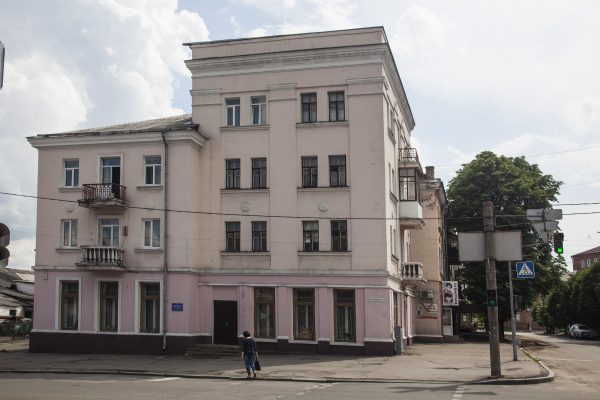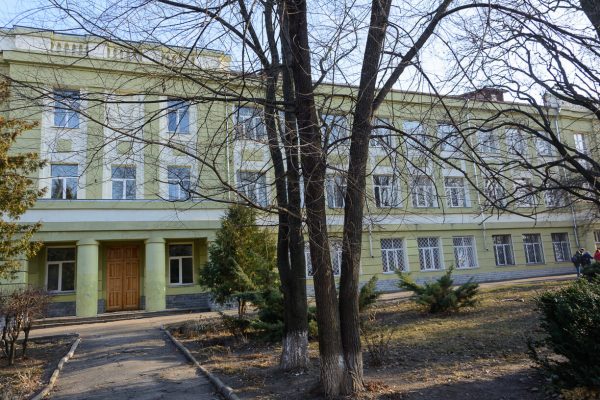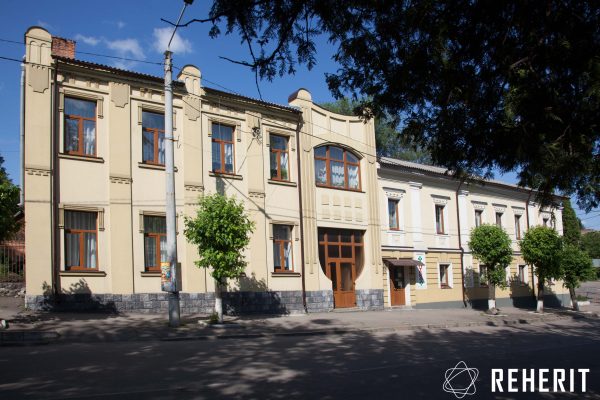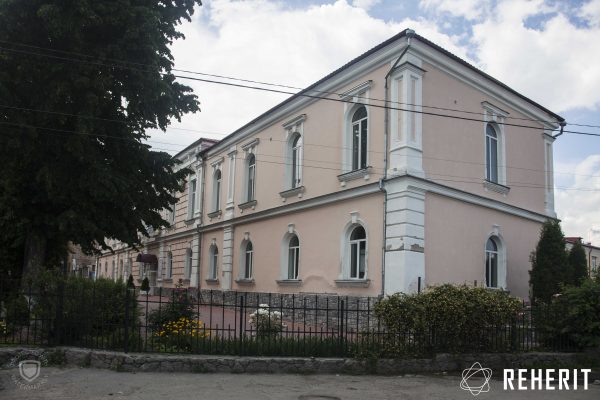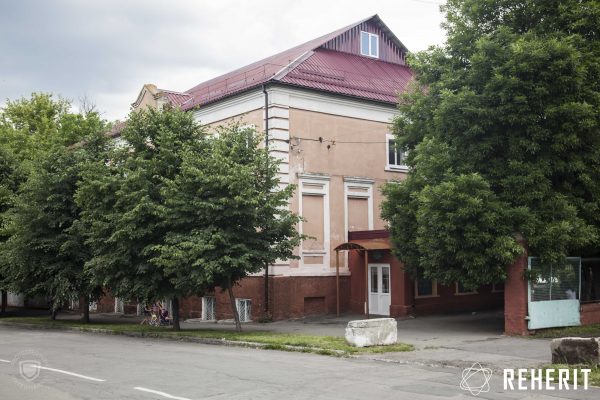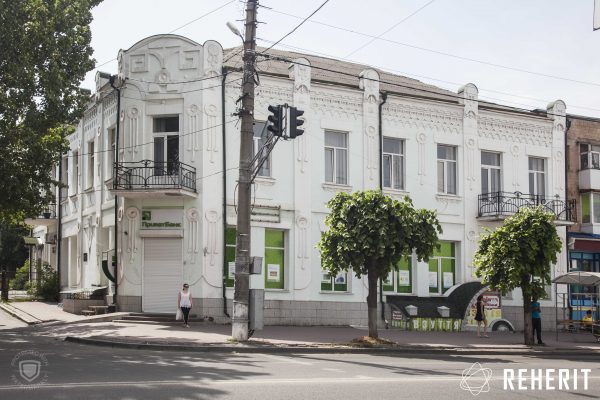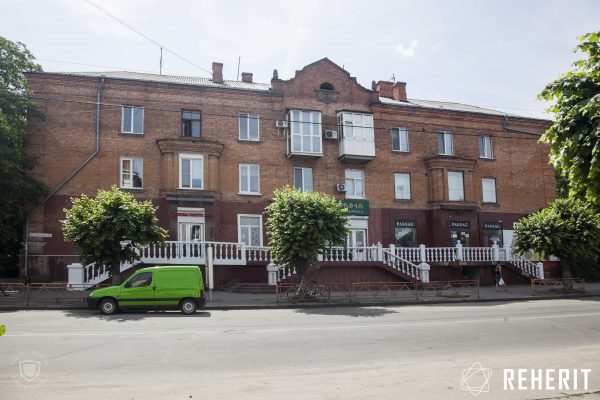English below ↓
Парку «Софіївка» судилося стати візитівкою і головною принадою Умані. Від ХІХ ст. і дотепер до міста їдуть, аби побачити його красу. «Софіївка» – одне з найпопулярніших туристичних місць в сучасній Україні, парк включено до переліку «Семи чудес України». Цінність парку визнана і на міжнародному рівні: у 2000 році його було внесено до Попереднього списку Всесвітньої спадщини ЮНЕСКО.
Особливого шарму «Софіївці» додає love story, пов’язана з її заснуванням. Парк був створений за наказом власника Умані заможного магната Станіслава Щенсного Потоцького як подарунок для його коханої дружини Софії де Вітт-Потоцької. Ім’я Софії ще за життя було оповите легендами і скандальними чутками: бідна дівчина з Константинополя, куплена на невільницькому базарі, змогла стати femme fatale кінця XVIII ст., про яку мріяли поети, аристократи та монархи. Парк «Софіївка» знаний передусім як «парк кохання» – красивий дарунок для красивої пані, пам’ятник почуттям, що непідвладні часу.
Зведення парку стало справою дорогою: за легендою, Потоцький витратив на будівництво понад 10 мільйонів злотих, величезну на той час суму. Будівництво розпочалося у 1796 році. Розробив проєкт парку та особисто керував будівництвом Людвиг Метцель, польський військовий інженер. За шість років у долині річки Кам’янки постав розлогий парк – із різноманітними пейзажами, казковим різноманіттям рослинності та скульптурами. Родзинкою парку стала система штучних озер, водоспадів, каскадів та фонтанів – Метцель вправно обіграв особливості місцевого рельєфу.
Будь-який парк – це своєрідне дзеркало своєї доби, втілення уявлень про ідеальне довкілля і досконалий відпочинок. «Софіївка» була створена в часи моди на пейзажні, так звані англійські парки – парки, покликані дати повну ілюзію природності, майстерно створені так, аби творче втручання людини було непомітним. У подібному стилі робили парки Сан-Сусі у Потсдамі та сад Малого Тріанону у Версалі.
«Не віриться, що цей парк рукотворний», – писали про «Софіївку» її перші відвідувачі на початку ХІХ ст., споглядаючи її водоспади, озера, гроти і скупчення скель. Прогулянка парком була покликана створювати своєрідний настрій, провокувати і навіть виховувати почуття, спонукати замислитися. Особливість «Софіївки» – висока символічна насиченість простору, запрошення відвідувачів «читати» приховані сенси, закодовані у довкіллі.
Джерелом образів й алюзій стала переважно антична міфологія і мистецтво, передусім «Іліада» та «Одисея». Античні мотиви теж були частиною подарунку чарівній власниці, грекині за походженням, адже нагадували про її батьківщину і дозволяли створити «маленьку Елладу» серед степів. Сьогодні окремі елементи парку пропонують «читати» як масонську символіку (Потоцький був масоном) й історію випробувань душі для досягнення мудрості. Особливий настрій у парку створюється поєднанням каменю і води як протиставлення незмінного та плинного, сталості і руху, смерті і життя. У кожному разі «Софіївка» – це простір для вдумливого споглядання і неквапливих роздумів.
Від моменту появи «Софіївка» захоплювала людей з різних країн і культур. Особливе місце «Софіївка» посіла у польській романтичній літературі першої половини ХІХ ст. Письменники і поети приїздили до цього «дорогоцінного каменя, загубленого у степах» (за висловом Юліуша Словацького), як до джерела творчого натхнення та зразка досконалої краси. З польської літератури за «Софіївкою» закріпився образ Аркадії, країни щасливих, та Едему на землі. За легендою, ребе Нахман з Брацлава (духовний лідер брацлавських хасидів, який обрав Умань місцем свого спочинку, аби подбати про душі загиблих від рук гайдамаків місцевих євреїв), побувавши у парку, сказав, що відвідати Умань варто заради «Софіївки».
Європейська слава прийшла до парку на початку ХІХ ст., коли у 1815 році до міжнародного конгресу у Відні була видана поема Станіслава Трембецького «Софіївка». Французький переклад польської поеми, який зробив Огюст-Луї-Шарль де Лагард-Шамбона, дозволив багатьом європейцям прочитати про красу парку, а малюнки Вільяма Аллана заохочували побачити парк на власні очі.
Водночас і простір, й історія «Софіївки» уважному відвідувачу оповідають не лише про красу і про кохання, але і про політику. Зі зміною влади у ХІХ та ХХ ст. змінювалися імена парку, у ньому з’являлися нові пам’ятники, парк наділявся новими сенсами, натомість попередня історія переписувалася чи заперечувалася.
У 1830-х роках «Софіївка» перейшла під управління урядових структур Російської імперії (через участь сина Потоцького, Олександра, у повстанні 1830 року усі маєтки були конфісковані). Парк здобув нове ім’я – став Царициним садом, і нову власницю – імператор Російської імперії Микола І презентував його своїй дружині Олександрі Федорівні. Втім, це не просто історія передарунку коштовної речі від однієї жінки до іншої, а й замальовка про перетворення польського аристократичного культурного простору на простір імперський. З парку прибрали встановлені тут Олександром Потоцьким статуї Тадеуша Костюшки, очільника польського повстання 1794 року, і Юзефа Понятовського, уславленого польського військового. Натомість у середині ХІХ ст. на вершині тераси Муз з’явився обеліск «Орел» – пам’ятний знак про візит до парку Миколи І. Змінилася й атмосфера парку, природну невимушеність заступила впорядкованість: з’явилася брукована центральна алея, павільйони та башти на вході.
У 1923 році парк отримав нове промовисте ім’я – Сад імені ІІІ-го Інтернаціоналу (міжнародної організації, яка об’єднувала комуністичні партії світу з 1919 по 1943 рр. та плекала ідеал світової пролетарської революції). Подібно до інших націоналізованих палаців, садиб та парків, парк мусив стати символом соціальної революції – з місця розваг для заможних стати простором відпочинку робітників. У радянський час відвідувачам показували не лише озера, водоспади й альтанки, а й типові радянські пам’ятники: братську могилу воїнів Великої Вітчизняної війни та камінь, який маркував місце першого святкування першотравневих свят в Умані. А історія створення парку стала передусім історією кріпосних селян – тих, чиїми руками зводилися скелі і саджалися дерева.
Сучасна «Софіївка» – це водночас музей садово-паркової архітектури та науково-дослідний інститут Національної академії наук України. Одне з її важливих і не одразу помітних для туристів завдань – вивчення, охорона і розвиток рослинного світу, як типових для цього регіону України, так й екзотичних. У парку росте понад 3500 таксономічних одиниць деревних та трав’янистих рослин, деякі з них рідкісні, завезені ще за часів Станіслава і Софії Потоцьких. Серед них тюльпанове дерево, гінкго білоба, болотні кипариси і платани. Подеколи парк страждає від конфлікту між запитами туристичної індустрії та інтересами збереження природи. Якщо у «Софіївці» часів Потоцьких перших відвідувачів заохочували зривати квіти і сидіти на траві, у ХХІ ст. правила змінилися: кожного просять бути максимально дбайливим до природи.
The Sofiyivka Park
The Sofiyivka Park was fated to become Uman’s calling card and chief attraction. From the 19th century to this day people visit the city to admire the park’s beauty. The Sofiyivka is one of the most popular tourist destinations in modern-day Ukraine, it was named one of the “Seven Wonders of Ukraine.” Its importance was also recognized internationally, when in 2000 it was included in UNESCO’s tentative World Heritage List.
Another fascinating aspect of Sofiyivka is the love story that led to its creation. The park was founded by wealthy magnate and landlord of Uman, Stanislaw Szczesny Potocki as a gift for his beloved wife, Sofia de Witt Potocka. Sofia’s name was surrounded by legend and scandalous gossip even during her lifetime: a poor girl from Constantinople, bought at a slave market, eventually managed to become a late 18th-century femme fatale, dreamed of by poets, aristocrats and monarchs. The Sofiyivka park is known primarily as a “park of love” – a beautiful gift for a beautiful lady, a monument to timeless sentiments.
Construction of the park was very costly – according to legend, Potocki spent over 10 million zlotys, an enormous sum at the time. Construction began in 1796. The project was developed and construction personally led by Ludwig Metzel, a Polish military engineer. In six years, a spacious park arose in the valley of the Kamianka river, with various landscapes, a whimsical variety of flora, and sculptures. The twist was system of artificial lakes, waterfalls, cascades and fountains, which Metzel achieved by skillfully working with the peculiarities of the local landscape.
Any park is something of a mirror of its age, an implementation of ideas of a perfect environment and perfect rest. Sofiyivka was laid at a time when landscape – so-called English – parks were in vogue. These were meant to create a total illusion of nature, skillfully created such that the human creative interference was unnoticeable. Other parks built in this style are the Sanssouci in Potsdam and the Petit Trianon at Versailles.
“It’s hard to believe that this is a man-made park,” Sofiyivka’s earliest visitors wrote in the early 19th century, while contemplating its waterfalls, lakes, grottoes and rocks. A stroll through the park was meant to evoke a special mood, to provoke and even educate sentiments, cause the visitor to think. Sofiyivka’s space is symbolically dense, inviting the visitors to “read” hidden meanings written into the environment.
The images and allusions come predominantly from ancient mythology and art, in particular the Iliad and the Odyssey. Ancient motifs were also part of the idea of the gift to the beautiful recipient, who was of Greek extraction, reminding her of her homeland and helping create “little Ellada” among the steppes. Some interpretations “read” certain elements of the park as Freemason symbolism (Potocki was a Freemason) and a narrative of the soul’s trials in the process of gaining wisdom. Another emotional accent in the park is created by the union of stone and water, as juxtaposition of the immutable and the fleeting, stability and flow, death and life. In any case, the Sofiyivka is a space for thoughtful, unhurried contemplation.
From the moment of its creation, Sofiyivka captivated people from various countries and cultures. The park holds a special place in Polish Romantic literature of the first half of the 19th century. Writers and poets came to visit this “pearl amid the steppes” (according to Juliusz Slowacki), as a source for inspiration and an example of perfect beauty. Polish literature paints the Sofiyivka as an Arcadia, land of the content, and an earthly paradise. According to legend, having visited the park, Rabbi Nachman of Breslov (spiritual leader of the Breslover Hasidim who chose Uman as his place of rest to take care of the souls of the local Jews who died at the hands of the Haidamaks), said Uman was worth visiting for the sake of Sofiyivka.
The park gained European renown in the early 19th century, when “Sofiowka,” a poem by Stanislaw Trembecki was published in 1815 for the Congress of Vienna. The French translation of this Polish poem by Auguste Louis Charles de la Garde de Chambonas made a description of the beauty of the park available to many Europeans, whereas illustrations by William Allan encouraged interest in seeing the park for oneself.
At the same time, an observant visitor will see more than just beauty and love in Sofiyivka’s space and history. There is an undercurrent of politics; as authorities changed in the 19th and 20th century, the park was given different names, different monuments were installed, the place was imbued with new meanings, its previous history rewritten or denied.
From the 1830s, the park was administered by governmental bodies of the Russian Empire (due to the participation of Potocki’s son Aleksander in the 1830 uprising, all Potocki estates were confiscated). The park was given a new name, Tsaritsyn sad (“Tsaritsa’s Garden), and a new owner – Russian emperor Nicholas I presented it to his wife Alexandra Fedorovna. However, this is not just a story of precious thing being taken from one woman and given to another, it’s also a depiction of turning a cultural space of the Polish nobility into an imperial space. Statues of Tadeusz Kosciuszko, leader of the Polish uprising of 1794, and Jozef Poniatowski, renowned Polish general, installed here by Aleksandr Potocki, were removed. Instead, an “Eagle” obelisk was installed at the top of the Terrace of the Muses in the mid-19th century to commemorate Nicholas I visit to the park. The park’s ambience also changed – natural ease was replaced with order: a paved central alley, pavilions and entrance towers were installed.
In 1923 the park was again tellingly renamed the Garden of the Third International (international organization uniting Communist parties of the world from 1919 to 1943 and was dedicated to the ideal of the world proletarian revolution). Similar to other nationalized palazzos, estates and parks, this park had to become a symbol of social revolution, turning from a place of recreation for the wealthy to a space of rest for workers. In the Soviet period the park’s visitors were shown not only lakes, waterfalls and gazebos, but also typical Soviet monuments: a communal grave of the fallen in the “Great Patriotic War,” and a stone marking the place of the first celebration of International Workers’ Day in Uman. History of the park was reduced primarily to a history of the peasant serfs, whose labor was used to construct the rocks and plant the trees.
Today’s Sofiyivka is both a museum of park architecture, and a scientific research institute of the National Academy of Sciences of Ukraine. An important task not immediately noticeable to the average tourist is the study, conservation and development of flora, plants both typical for this region of Ukraine, as well as exotic. The park contains over 3,500 taxonomic units of woody and herbaceous plants, some rare and brought in still in Stanislaw and Sofia Potocki’s day. Among these are a tulip tree, a gingko biloba, swamp cypresses and plantain trees. At times the park struggles to reconcile the conflict between the demands of the tourist industry and the interests of conservation. Whereas in Potocki’s day, the early visitors were encouraged to pick flowers and lounge on the grass, different rules apply in the 21st century: visitors are urged to show utmost regard to nature.
TEXT BY Tetiana Portnova.
This text is an extended description of an object marked in the urban space as part of a project dedicated to marking objects of cultural heritage.

